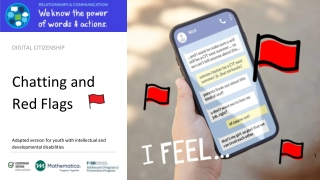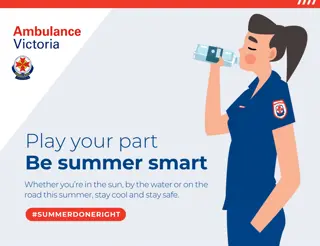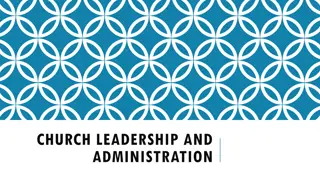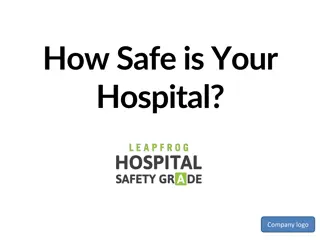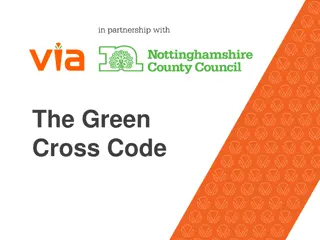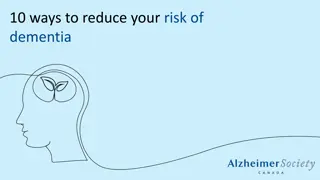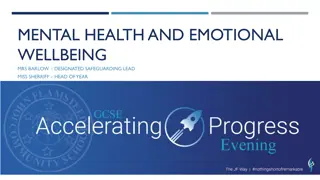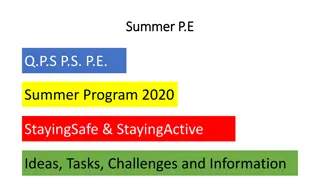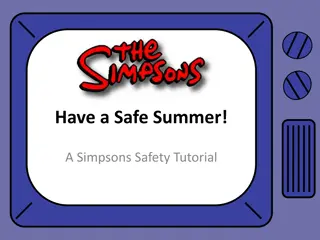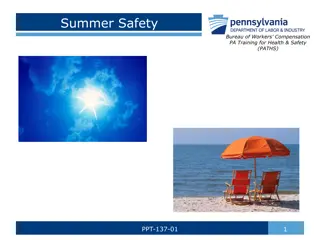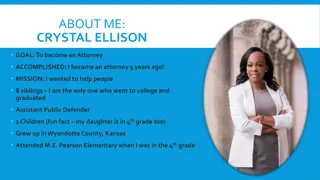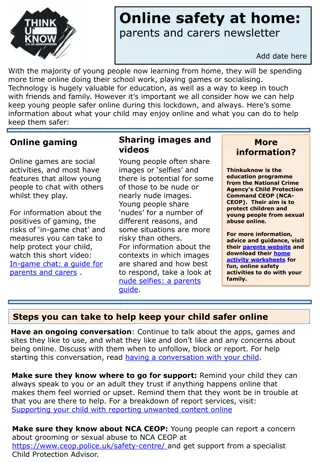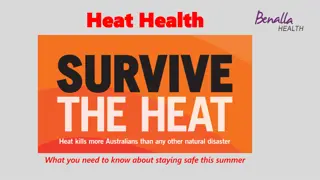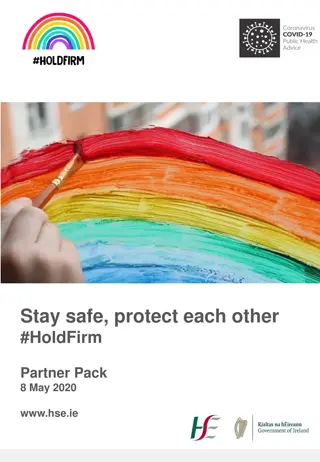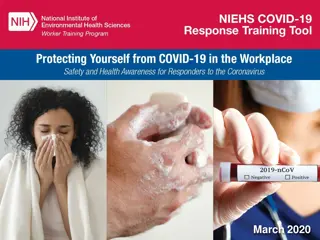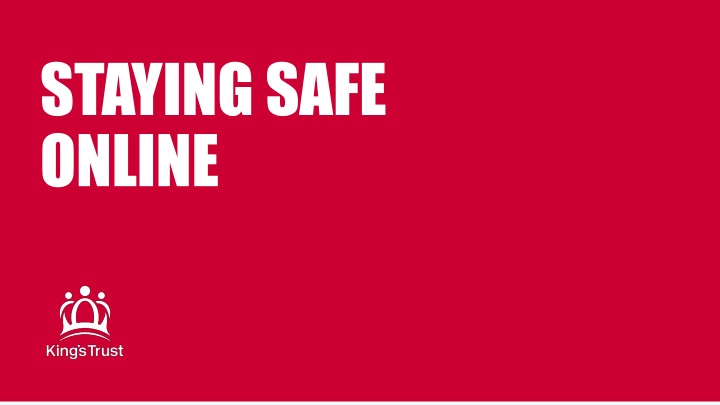
Online Safety Tips for Kids - Stay Safe and Secure on the Internet
Learn about e-safety, acceptable online behaviors, spotting fake news, and how to verify information online to protect yourself and your loved ones. Stay safe online by following essential safety practices and recognizing potential dangers. Be cautious of sharing personal information, meeting strangers, and identifying fake news sources. Enhance your digital literacy skills to navigate the online world confidently.
Download Presentation

Please find below an Image/Link to download the presentation.
The content on the website is provided AS IS for your information and personal use only. It may not be sold, licensed, or shared on other websites without obtaining consent from the author. If you encounter any issues during the download, it is possible that the publisher has removed the file from their server.
You are allowed to download the files provided on this website for personal or commercial use, subject to the condition that they are used lawfully. All files are the property of their respective owners.
The content on the website is provided AS IS for your information and personal use only. It may not be sold, licensed, or shared on other websites without obtaining consent from the author.
E N D
Presentation Transcript
STAYING SAFE ONLINE
E-SAFETY Internet safety, cyber safety, e-safety and online safety all mean the same thing being safe on the internet! Safe - Never give your personal information to people that you do not know. Meet - Never arrange to meet with strangers. Accepting - Never accept emails or messages from people that you do not know as they might contain a virus. Reliable - Not everything that you read on the internet is true. Tell - If anything upsets you on the internet always tell a trusted adult.
ACCEPTABLE OR NOT ACCEPTABLE? Are these behaviours acceptable or not acceptable? 3. Forwarding an email to your friends, which you have been sent. It says horrible things about someone that used to go to your school. 1. Giving out your contact details to someone you have met online and who has indicated they live locally to you. 2. Allowing someone to shoulder surf over you whilst you re on a bus.
FAKE NEWS ISNT JUST IN ARTICLES Have you seen fake news in any of these formats before? Groups, e.g. on Facebook Statuses, stories, videos, tweets Forwarded messages and photos from people you know
S H A R E Make sure that the story is written by a source you trust, with a reputation for accuracy. If it s from an unfamiliar organisation, check for a website s About section to learn more. Always read beyond the headline. If it sounds unbelievable, it very well might be. Be wary if something doesn t seem to add up. Make sure you check the facts. Just because you have seen a story several times, doesn t mean it s true. If you re not sure, look at fact checking websites and other reliable sources to double check. Check whether the image looks like it has been or could have been manipulated. False new stories often contain retouched photos or re-edited clips. Sometimes they are authentic but have been taken out of context. Many false news stories have phony or lookalike URLs. Look out for misspellings, bad grammar or awkward layouts. Source: https://sharechecklist.gov.uk/
IS THIS FAKE NEWS? NASA IS INSTALLING INTERNET ON THE MOON https://www.bbc.co.uk/newsround/54611342
IS THIS FAKE NEWS? A UNIVERSITY HAS BANNED CAPITAL LETTERS TO AVOID SCARING STUDENTS https://www.Cardiffunit.[co].[uk]
IS THIS FAKE NEWS? A COUPLE IN CALIFORNIA HAVE NAMED THEIR BABY AFTER AN EMOJI http://Truthuncovered.[org].[uk]
SPOTTING FAKE NEWS FOR YOURSELF Things to remember HOW DOES IT MAKE YOU FEEL? ALWAYS CHECK IT S FROM A TRUSTED SOURCE WHERE YOU CAN LEARN MORE You can trust websites such as: https://www.facebook.com/GetS afeOnline/ Always double-check it and speak to a parent, teacher or guardian. www.NHS.uk https://www.nspcc.org.uk/keepin g-children-safe/ https://www.nidirect.gov.uk/ You should do the same if an article makes you angry or upset. Real news can sometimes be uncomfortable, but it should never hurt us. www.bbc.co.uk https://news.sky.com/uk www.getsafeonline.org https://www.euronews.com/ https://www.who.int/
WHAT IS PHISHING? Phishing is when criminals try to convince you to download/open malicious attachments, click on links or give sensitive information away (such as bank details). Once clicked, you may be sent to a dodgy website which could download viruses onto your computer or steal your passwords. Cyber criminals send emails that claim to offer a financial reward, give you money back when opening a new bank account or encourage you to donate following a recent disaster. Like many phishing scams, these emails are preying on real- world concerns, to try and trick you into clicking.
SPOT THE TELL-TALE SIGNS OF PHISHING C A U S E urrent events - Are you expecting to see a message like this? uthority - Is the sender claiming to be from someone you trust (like your doctor, family member, friends)? rgency - Are you told you have a limited time to respond (like in 24 hours or immediately)? carcity - Is the message offering something in short supply (like concert tickets, money or a cure for medical conditions)? motion - Does the message make you panic, fearful, hopeful or curious?
HOW TO AVOID BEING PHISHED Think DART! D A R T onot click on links in posts, tweets or direct messages, unless you are 100% certain that they are genuine and well-intentioned. skyourselfif somebody genuine would really contact you in this way with this information. ecognise threats of financial issues or offers that seem too good to be true for what they really are. ake time to consider your actions before responding to approaches on social media.
HOW TO CREATE A SAFE PASSWORD Never use the following personal details for your password: The names of you and your family Friends names Pets names Place or date of birth Favourite holiday destination Something related to your favourite sports team
PASSWORD TIPS Protect your email by using a strong, separate (unique) password. Use three random words to create a strong password. Numbers, upper and lower case letters and symbols strengthen passwords, e.g.: 3redhouseMonkeys27! Source: https://www.ncsc.gov.uk/collection/top-tips-for-staying-secure-online/use-a-strong-and-separate-password-for-email
SAFE AND UNSAFE PASSWORDS CLUES: Tom Smith is a Spurs supporter, born October 2005, with a dog named Peanut and he loves going on holiday in Europe. Which one of these passwords are SAFE? TangoshOpB old908? TSmith12100 5 Tokentable20 @arT Tomsmith123 D. C. B. A.
SAFE AND UNSAFE PASSWORDS Which one of these passwords are SAFE? Ball33glasscir cle? Foot!Garden6 smart 99Spurs! Spurs100 D. C. B. A.
SAFE AND UNSAFE PASSWORDS Which one of these passwords are SAFE? TSmithSpain 18 EarjacketTop ?400 RoomPeople 7caR! Peanutdog20 00 D. C. B. A.
E-SAFETY EXPERTS Create a vlog, podcast or online article. You need to answer: What does e-safety mean? What are three examples of online threats? What are three ways to avoid online threats? What are three ways to make a password secure? What are two ways to tell if a webpage is secure?
WHAT CAN YOU REMEMBER? Complete each sentence with what you have learnt about e-safety! COLUMN A COLUMN B 1. SMART is a great way A. to avoid being phished 2. SHARE is a great way B. is called phishing 3. Always check a website C. to remember to keep you safe online 4. Cyber criminals trying to convince you to click on links D. is from a trusted source 5. CAUSE is a great way E. to spot a phishing email 6. DART is a great way F. . to remember if an article is fake
RESEARCH AND SHARE Visit these websites and share what you have learnt with your friends and family (but don t tell them your passwords ) Discuss which websites would be a reliable and safe source of news Discuss what phishing emails look like and how to spot them Discuss what a safe password looks like https://www.getsafeonline.org/protecting-your- computer/social-media-phishing/ https://www.ncsc.gov.uk/guidance/suspicious-email-actionshttps://www.getsafeonline.org/sh opping-banking/passwords/

